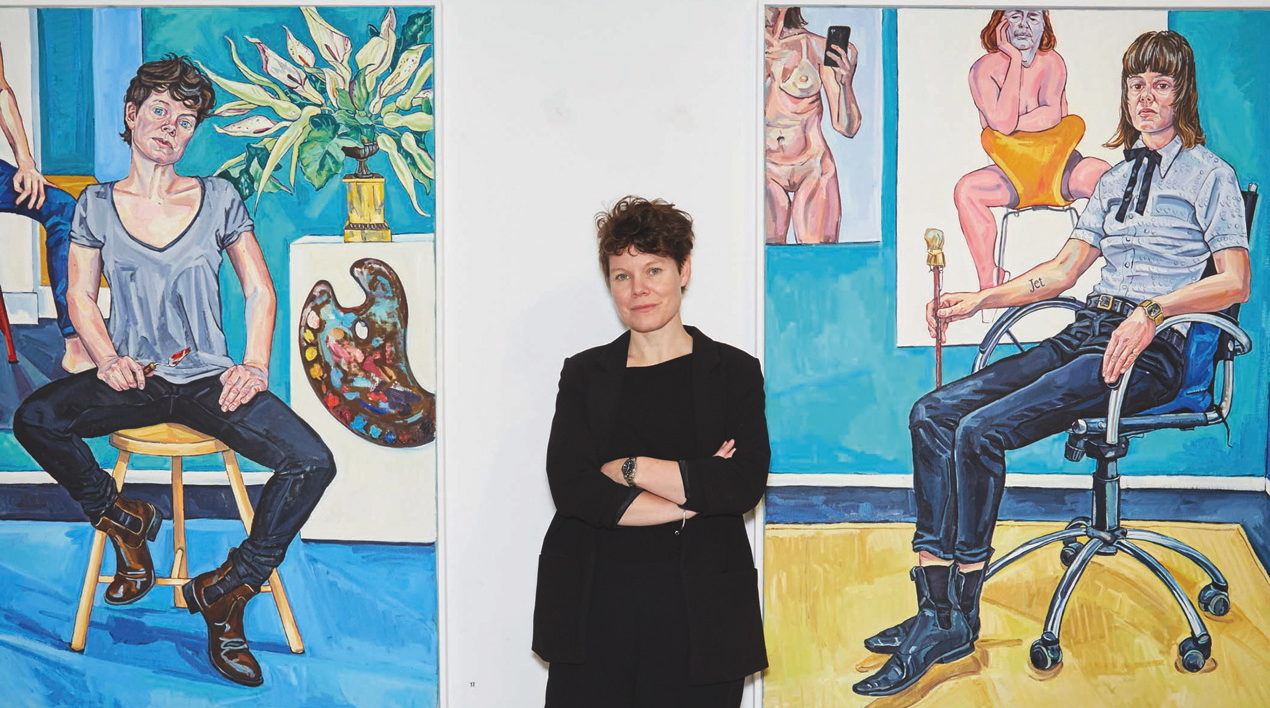In the frame: Sarah Jane Moon
Sarah Jane Moon is reframing portraiture away from the male gaze. Diana Souhami, author of a book about lesbians’ influence on Modernism, asks her about her work
“My work is about people, who happen to be mostly women and mostly from the LGBTQI+ community,” the portrait painter Sarah Jane Moon says.
Moon takes the classic art of portrait and figure painting into the arena of gender diversity and portrays lesbian, butch, trans and queer individuals. She shows their attitudes, hairstyles, fashion statements, t-shirts and tattoos and talks of striving for connection with each of them through her painting.
All wait to be depicted, inviting interpretation. They are posed, usually seated, mostly alone, some with a partner. All are light years away from the reclining nudes, befrocked daughters and family members of nineteenth-century male portraiture.
None of the people Moon paints are subjects, or apologists – most of them she knows, either as friends or as contributors to the queer community. They are artists, performers and writers.
“I am here, reckon with me” might be a caption for each. “I aim to celebrate those who I admire and respect and who are uniquely themselves,” she says.
“Portraiture can be a terribly loaded genre, historically often used to convey notions of wealth, class and privilege. Frequently it has been employed to prop up societal and heteronormative ideas of the nuclear family. My work consciously and deliberately seeks to expand the genre and provide more ways of being.”
Brought up in a small New Zealand town, Moon unearthed and lived her lesbian identity in London. “I found a load of brilliant women who were doing amazing things,” she says. Her community inspires and connects with her. She supports Stonewall, the Terence Higgins Trust and Pride in London.
Moon is a lesbian painter in so far as she is lesbian. For the rest, with her concentration on technique, detail and form, her vibrant use of colour, her focus and energy, she is an ambitious and dedicated artist, alone with her muse.
I find myself reading the titles of the books on the shelves in her paintings, seeing a host of references to notable feminists, but also a wave to John Berger, Gustave Courbet, Matisse, Hockney. She pulls her community from visual oblivion, celebrates their diversity, parades their difference, even as she crafts them into abiding art works and takes them into the wider cultural world.
Her allegiance is to feminism. Her painterliness, technique, discipline and concentration are mainstream and for all time. She has an art theory background, knows her history and her contribution to its changing path. Though contemporary, she wants her work to last. She speaks for all women when she says: “Culture is saturated with male voices and male paintbrushes, images by men that reference the world from a male standpoint.”
Moon hopes this year’s BP award exhibition at the National Portrait Gallery will be postponed rather than cancelled. In it she has a huge portrait of the New York lesbian photographer Lola Flash, whose work celebrates the lives of queer people of colour. Lockdown or not, Moon has plenty of exhibition opportunities, past accolades, commissions and work in hand.
In more recent paintings a shift is discernible to a freer style, less distraction from the central character, a challenge to herself to rescind control. Her gallery of people grows. It will be intriguing to see how far and fast that happens and how her work evolves.
Diana Souhami is the author of No Modernism Without Lesbians (£25, hardback, Head of Zeus)
Photo: Holly Falconer

Leave a reply
Your email address will not be published.